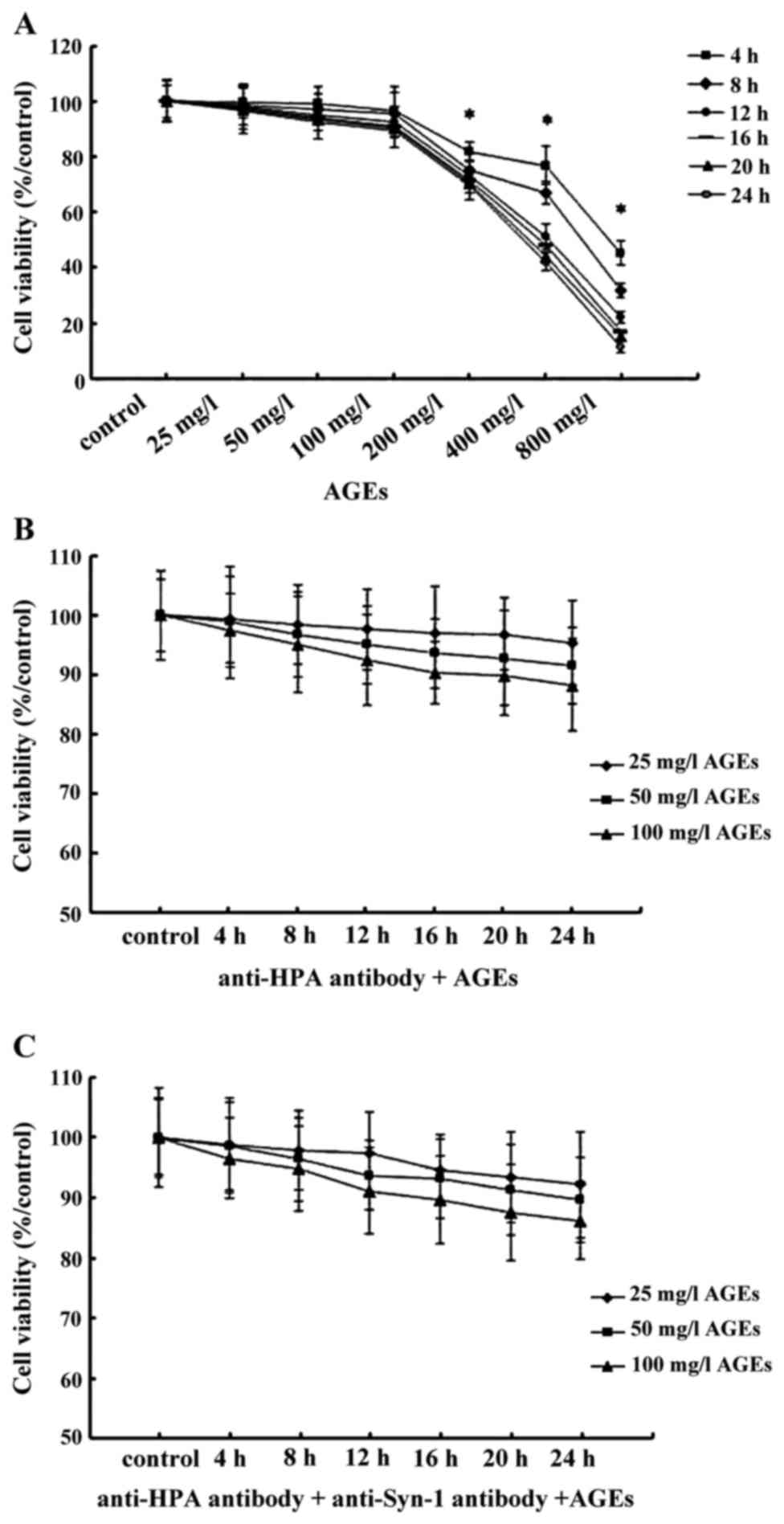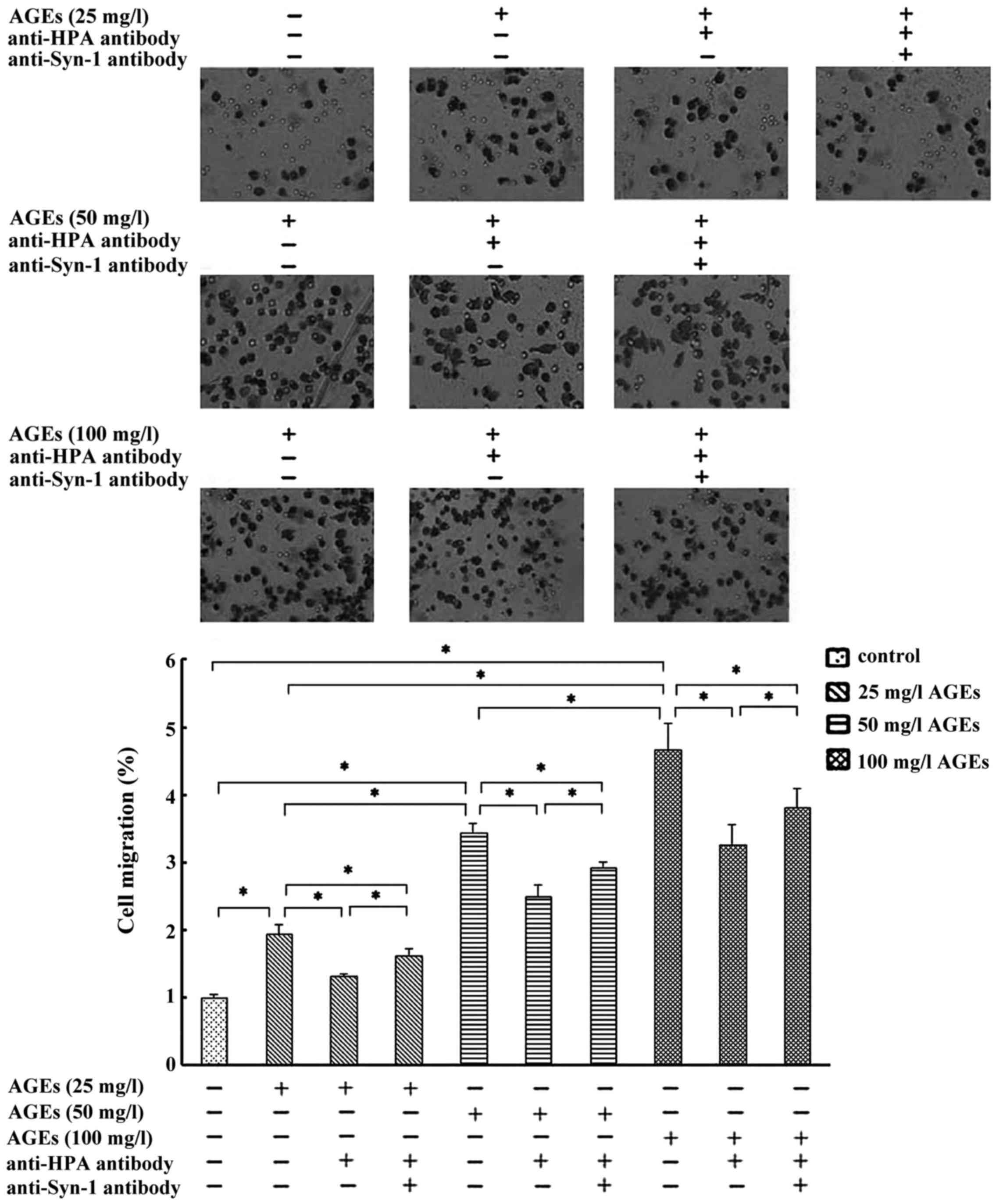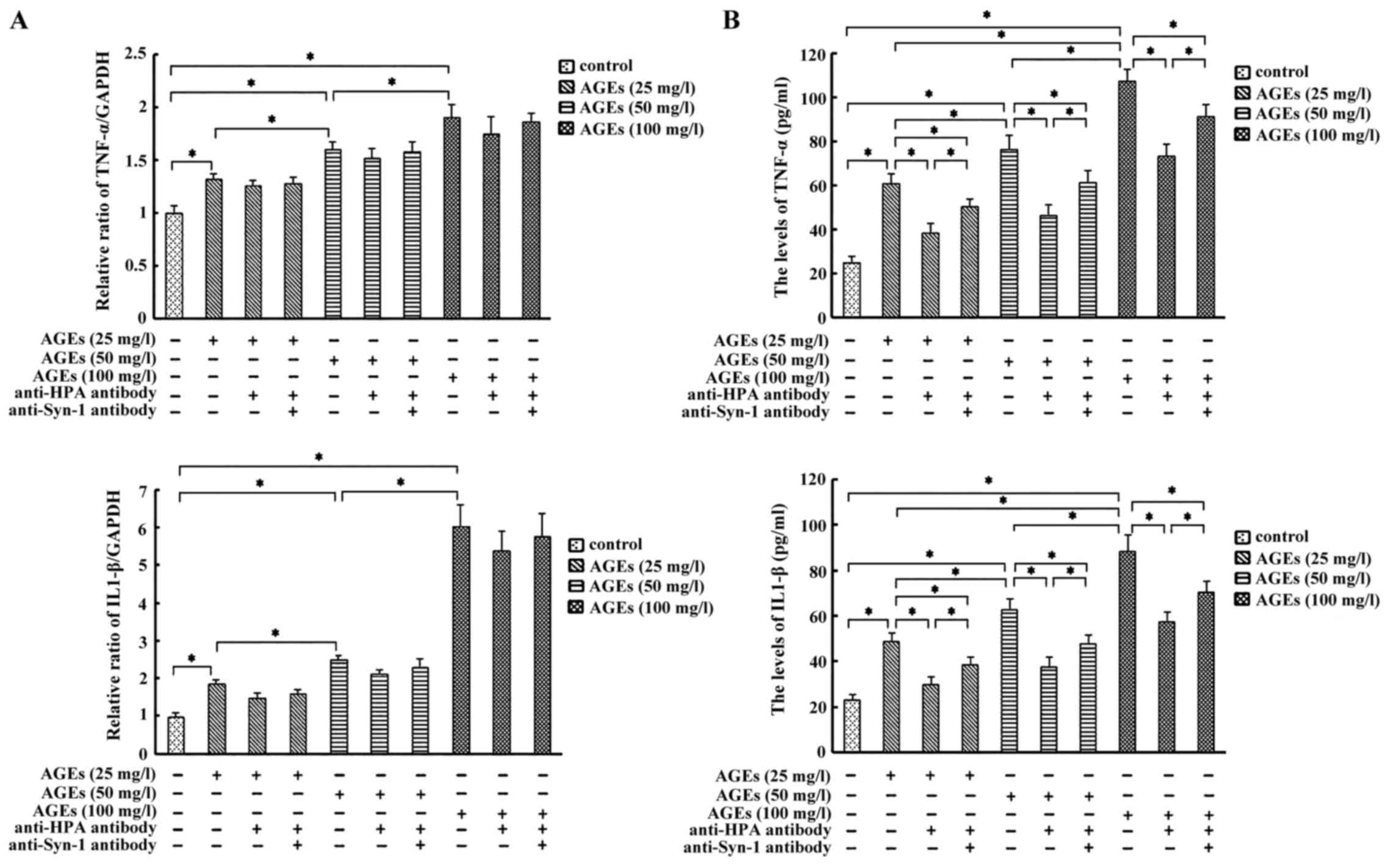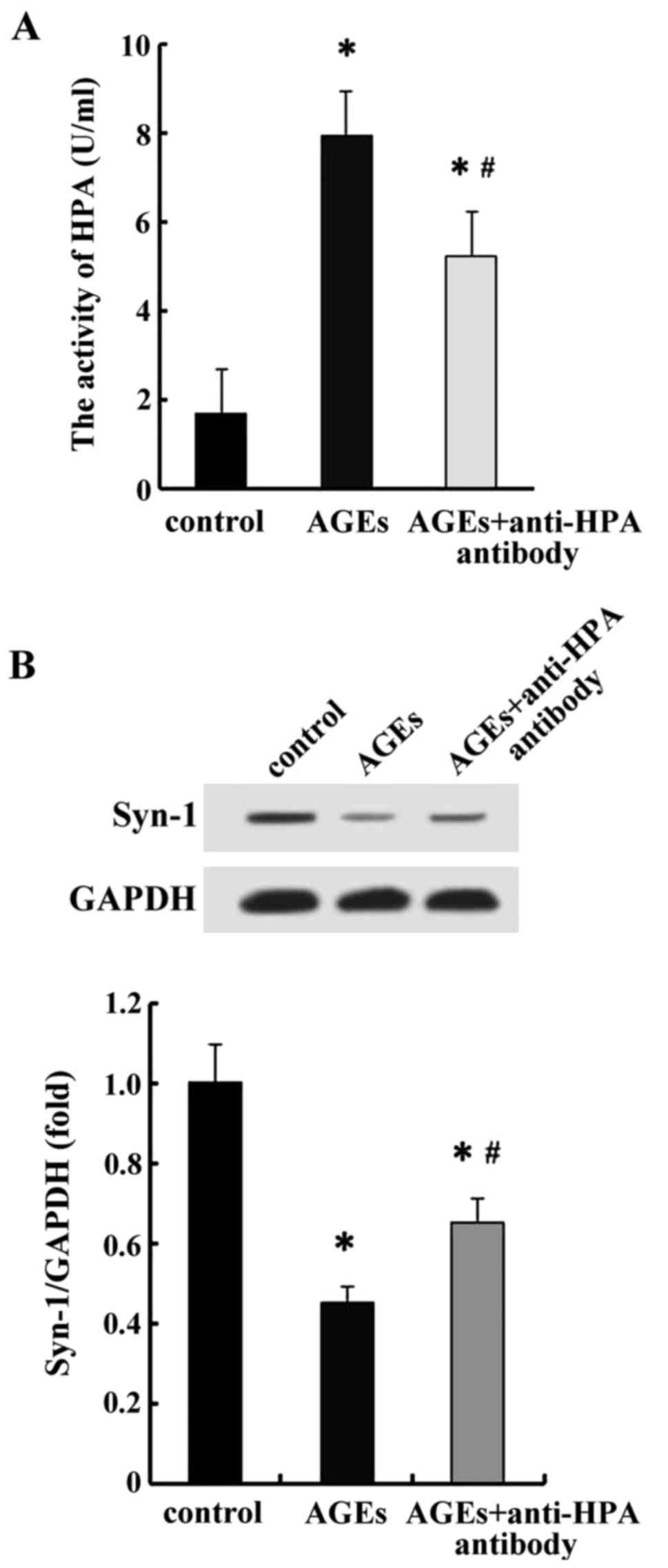Evaluation of the C-domain of heparanase during AGE-induced macrophage inflammtory response
- Authors:
- Published online on: June 15, 2017 https://doi.org/10.3892/etm.2017.4609
- Pages: 1017-1022
-
Copyright: © Qin et al. This is an open access article distributed under the terms of Creative Commons Attribution License.
Metrics:
Total
Views: 0 (Spandidos Publications: | PMC Statistics:
)
Total PDF Downloads: 0 (Spandidos Publications: | PMC Statistics:
)
Abstract
Diabetic vasculopathy is intensified by macrophage inflammation caused by advanced glycation end products (AGEs). Heparanase (HPA) is a unique endoglycosidase, which cleaves heparan sulfate proteoglycans (HSPGs) including syndecan-1 (Syn-1) to further stimulate macrophage cell migration and inflammation. The present study was planned to evaluated the role of C-domain (if any) of HPA in AGE inflammatory response in macrophages. Cell viability was assessed using MTT assay, migration assay, ELISA for tumor necrosis factor‑α (TNF‑α), interleukin-1β (IL-1β) levels, mRNA expression by RT-PCR and heparan degrading enzyme assay for HPA activity. In the present study, we found that pretreatment with anti-HPA antibody, which recognizes the C-domain of HPA inhibited macrophage migration, secretion of IL-1β and TNF-α as well as decreased HPA enzymatic activity and increased Syn-1 protein expression in AGE-induced macrophages. Compared with anti-HPA antibody pretreatment, co-pretreatment with anti-HPA plus Syn-1 antibodies promoted macrophage migration, and secretion of IL-1β and TNF-α significantly in AGE-induced macrophages. In addition, pretreatment with anti-HPA or anti‑HPA plus Syn-1 antibodies did not markedly change the mRNA levels of IL-1β and TNF-α concentration AGE‑treated macrophages. The results showed that C-domain of HPA mediates AGE-induced macrophage migration and inflammatory cytokine release via Syn-1 protein expression. Furthermore, C-domain of HPA may have a key role in diabetic vascular complication‑associated inflammatory response.













